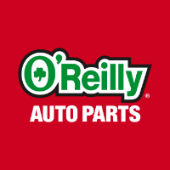-
Welcome to Auto Parts Forum
Whether you are a veteran automotive parts guru or just someone looking for some quick auto parts advice, register today and start a new topic in our forum. Registration is free and you can even sign up with social network platforms such as Facebook, X, and LinkedIn.
EV Tools vs. ICE Tools – What You Need To Know
-
Similar Topics
-
By Counterman
On modern vehicles, overheating is a rare occurrence thanks to high-quality hoses, thermostats and better engine management. Unfortunately, the weak point is still the coolant. Whether it’s a 100,000-mile or 150,000-mile coolant, eventually it will break down and lose the ability to protect the components with which it comes into contact.
Coolant at 100,000 miles may look the same as coolant with zero miles, as the real difference between good and bad coolant can’t be seen with the naked eye; it is in the chemistry and based on mileage.
Coolant contains additives called buffers that keep it at a neutral pH but these buffers are meant to last forever. When these chemicals become depleted, the pH can’t be controlled. It rises dramatically in a short period of time the moment the buffers are fully depleted. This is why replacing the coolant at the recommended interval is critical.
Coolant has two specifications that can be used to justify replacement — the condition of the additive package and the freezing point.
The additive package is the secret sauce for a coolant. Its main function is to control corrosion. Other components of the additive help with heat transfer and cavitation reduction. Some additive packages use seal conditioners to extend the life of the gaskets and plastic carriers.
The freezing point is measured by the overall specific gravity of the coolant, which has a direct relationship to the coolant/water mixture. This test can help spot coolant that has been compromised by the owner topping off with water. This measurement works well on systems that do not have pressurized reservoirs.
The strength or freezing point of coolant can be measured with a simple hydrometer. This device uses a calibrated float or plastic balls (not as accurate) to show the specific gravity of the coolant. This, in turn, shows how much freezing/boiling protection the coolant offers. You must remember to compensate for temperature because the specific gravity (density) of the coolant is lower when the coolant is hot.
The more professional tool for this purpose is an optical refractometer because it is very accurate and automatically compensates for temperature. Be aware: these are not simple, inexpensive tools. A refractometer can cost up to $300 or more because of the precision optics in its lens. Ethylene glycol (EG) and polyethylene glycol (PG) antifreeze have slightly different densities, so you have to use a hydrometer or refractometer with the appropriate scale (or one with a dual scale) for accurate test results.
Color-coded chemical test strips that are dipped into the coolant can be used to quickly and easily reveal the condition of the coolant. These strips of coated capillary paper react to the presence of certain dissolved minerals in the coolant and change color to give a good, marginal or bad indication of the coolant’s pH condition. Some test strips also show the concentration of antifreeze in the coolant.
The added benefit of test strips is that the results can be shared with the owner by attaching the used strip to the inspection form.
But, mileage is the gold standard for any coolant replacement recommendation. Engineers and chemists spend a lot of time formulating the coolant to match the engine and interval.
If you are performing a water pump, heater core or hose repair, recommend a full coolant flush. Just topping off the coolant can lead to a mixed bag when measuring the pH and freezing point. Also, check the specific gravity before a repair. Many customers know how to top off their coolant with water that could dilute the coolant concentration.
Selling any fluid maintenance service is difficult these days. But, if you document and educate customers on the importance of coolant, it becomes more than just an “add on” service.
The post
link hidden, please login to view appeared first on link hidden, please login to view.
link hidden, please login to view 
-
By NAPA
The NAPA Network supplies adventure seekers and outdoor enthusiasts with the best RV cleaning products to keep their home away from home fresh and road ready. Whether you drive a large recreational vehicle with its own engine or tow-behind camper trailers, including Airstreams, pop-ups and fifth wheels, we have you covered. And of course, NAPAonline and NAPA Auto Parts stores carry
link hidden, please login to view. To start off, browse through products specifically designed for
link hidden, please login to view. Suck up any loose debris, dirt and pet hair using a high-powered link hidden, please login to view from popular brands like Craftsman, Armor All and Milwaukee. Keep in mind, even the best vehicle vacuum leaves behind crumbles wedged into crevices. To grab up as much as possible, utilize a link hidden, please login to view that can squeeze into hard-to-reach gaps. A cleaning gel features a non-stick, residue-free formula that leaves no mess behind, making it simple to clean your vehicle’s surfaces without the need for water or additional cleaning agents. link hidden, please login to viewIf you are shopping for the best products for RV interior spring cleaning, you can’t go wrong with
link hidden, please login to view. An RV is jam packed with surfaces that are coated with sticky handprints, food residue, grimy gear and pet hair. This multi-surface cleaner does not contain bleach, and is safe to use on vinyl and upholstery fabrics. And, after being applied, it will prevent mold and mildew from forming, which is great for families spending time at the beach or lake. Speaking of surfaces, an RV camper is filled with glass surfaces from appliances to bathroom fixtures to windows inside and out. Our NAPA experts highly recommend grabbing a bottle or two of the
link hidden, please login to view. If foam glass cleaner is your thing, go for the ammonia-free link hidden, please login to view that works on windows, mirrors and more. And finally, no bucket of RV cleaning products would be complete without air fresheners. Place
link hidden, please login to view underneath seats or inside cabinets and drawers. This vehicle deodorizer works on smoke, pet smells and food odors that are difficult to remove. For a quick refresh, stock up on a link hidden, please login to view from Chemical Guys. Don’t forget, participating NAPA Auto Parts stores offer a convenient
link hidden, please login to view option, so you can get back on the road in no time. And, NAPA offers even more savings with link hidden, please login to view. Earn 1 Point for every $1 you spend. Collect 100 Points, and automatically get $5 off your next order. Get Your RV Road Ready For Spring
At NAPA, we realize you bought an RV camper to spend more time outdoors, so let’s head outside. To start off your kit of RV exterior cleaning products, our experts recommend purchasing a solution to tackle splattered bugs, road tar and bird droppings. Because your recreational vehicle is massive, and you are likely to need to complete many washes in a season, go for the 32-ounce concentrate of
link hidden, please login to view by Sea Foam. This pre-soak eliminates the need for hard scrubbing, and is safe on vehicle paint, clear coats, gel coats, metal, glass, mirrors, outdoor carpet, plastic and vinyl. Follow up this pre-wash application with a true RV exterior cleaner, like a
link hidden, please login to view from Griot’s Garage. The ultra-slick formula offers a versatile application, including a traditional hand-applied bucket wash or with a foam sprayer. After doing all this intense spring cleaning, protect your hard work with the best RV wax that is safe on fiberglass. Our experts recommend, link hidden, please login to view, formulated specifically to remove oxidation from fiberglass or painted surfaces. The glossy shine provides unbeatable protection from harsh UV rays. Apply by hand or with an electric buffer. Need to stock up on the best RV roof cleaner? For RV roof cleaning, grab a bottle of Meguiar’s
link hidden, please login to view. It cleans, penetrates and rejuvenates nonpainted vinyl and rubber surfaces like new. Then, work your way down to any pull-out awnings. link hidden, please login to view should do the trick. It works on both vinyl and canvas materials. And finally, keep a can of link hidden, please login to view on hand. Of course, spring cleaning an RV is only one part of the long list of maintenance items for this rewarding passion. The NAPA Network carries the
link hidden, please login to view you need, from a link hidden, please login to view to link hidden, please login to view and link hidden, please login to view. And check out these detailed guides by the NAPA Experts on link hidden, please login to view and link hidden, please login to view. Photo courtesy of
link hidden, please login to view. The post
link hidden, please login to view appeared first on link hidden, please login to view.
link hidden, please login to view





Recommended Posts
Join the conversation
You can post now and register later. If you have an account, sign in now to post with your account.
Note: Your post will require moderator approval before it will be visible.